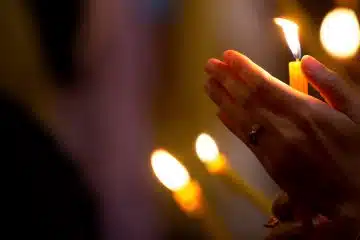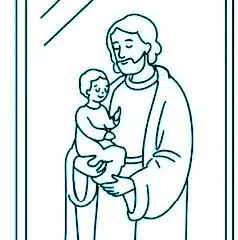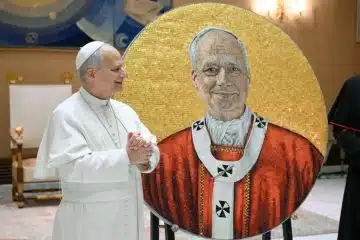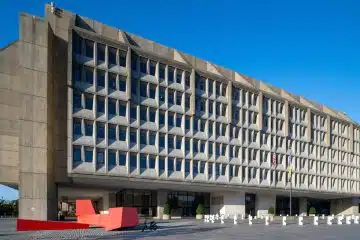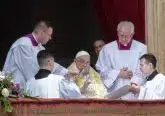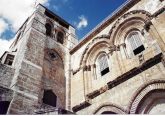The Easter Vigil: ‘the mother of all vigils’
by ACI Prensa
CNA Staff, Mar 15, 2021 / 05:37 pm MT (CNA).- The Easter Vigil, which takes place Holy Saturday night, “is the greatest and most noble of all solemnities and it is to be unique in every single Church,” the rubrics of the Missale Romanum proclaim.
The word vigil, which means “staying up all night,” takes on a special meaning for the night before Easter because it recalls the holy women who came to the tomb the early hours of Sunday morning.
In Matthew’s Gospel, Mary Magdalene and another Mary arrive at the tomb at dawn to finish embalming Jesus, but his body isn’t there. An angel tells them, “I know you are looking for Jesus who was crucified. He’s not here. He has risen. Tell his disciples to go to Galilee and they will see him there.” (Mt 28:6-7)
The vigil by its very nature takes place no sooner than nightfall Holy Saturday night and must end before daybreak Easter morning.
The vigil begins with the kindling of a “blazing fire” at a suitable place outside the church to gather the faithful around its warmth and beauty and to dispel the darkness of the night.
The celebrant blesses the fire with a prayer and then the Paschal Candle is brought forth and lit from the fire. The candle symbolizes the light of Christ, which “shines in the darkness” which “has not overcome it.” (John1:5)
The Paschal Candle is then processed into the darkened church and the congregation lights their small hand-held candles, starting from the Paschal Candle and then from one another, lighting up the whole church.
At the beginning of the vigil after the Paschal Candle is lit, the Easter Proclamation or Exsultet is said or sung, usually by a deacon, or by a priest or a lay cantor.
It briefly tells the story of salvation from the creation, the testing and fall of Adam, the liberation of the people of Israel from slavery in Egypt, and the culmination in Jesus Christ, who died for our sins and leads us to salvation.
The Exsultet is addressed to all humanity but especially to Christians. Saint Augustine invites Christians to constantly recall it because it is a message of hope that brings us the victory of light over darkness.
After the Scripture readings, the Baptismal Liturgy continues for candidates who have never been baptized. They and those who have been validly baptized in another Christian faith are then confirmed. If there are no candidates for Baptism, the Mass continues with the blessing of the water and the renewal of baptismal promises.
Finally, the Liturgy of the Eucharist follows and concludes the Easter Vigil.
“The Easter Vigil celebrates the Resurrection which fulfills all the prophecies by Jesus rising, never to die again,” said Father Donato Jiménez speaking to ACI Prensa, CNA’s Spanish language news partner.
Jiménez is a noted theologian who taught for many years at the Faculty of Pontifical and Civil Theology of Lima. The priest has published numerous articles on theology and other topics.
“This resurrection is what teaches us, more clearly than anything else, the fulfillment of the words of Jesus in our lives. Just as Jesus Christ died and on the third day he rose again, so the Christian who dies in Christ will also rise again at the end of time,” Jiménez said.



